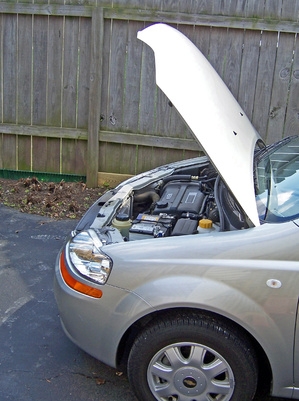
Replacing the battery in your Ford Falcon, the heart of the electrical system, means you can expect several years of service. You already know you can expect full power to your starter for fast and efficient starts and an emergency reserve of electricity in case your alternator fails. Yet you cannot afford to slap the battery in your vehicle and forget about it. Perform a few simple maintenance chores and checks before you start breathing easier.
People assume that batteries have been filled and maintained up until the time of purchase. Not so in many cases because the battery has, in all likelihood, been sitting on a shelf for months. If you have purchased a battery that has refill caps, you can visually inspect the level of the electrolyte. Pull the caps off and make sure the level of the electrolyte reaches the top of the bottom neck inside the battery. Add distilled water to any cell that looks low.
You'll need a battery hydrometer to check the specific gravity of your new battery, which will ensure the battery has a full charge. Many batteries lose charge while sitting on the shelf. Place the hydrometer inside one cell and draw enough electrolyte up into the bulb to float the mechanism. You want a reading on the "green" scale. For a numerical scale, 1.265 specific gravity will denote a good reading. Check all the cells.
After you have installed the battery in the vehicle, check the voltage supply of the alternator. Hook up the voltmeter leads to the battery's positive (red) cable top and the negative (black) cable top. Start the engine. You'll need from 14.2 volts to around 15 volts for adequate alternator output. If you don't and your charging rate is 13.8 volts or below, you probably have a charging problem.
A voltage meter also can test your standing battery voltage. With the engine off, connect the red voltmeter probe to the positive (red) battery cable. Connect the black voltmeter probe to the negative (black) battery cable. Generally, a reading around 12.7 volts shows a good standing charge. Refer to a chart for your specific deep cell, high-output maintenance-free battery requirements, which could differ slightly.
Start the engine. Turn on all your vehicle accessories to their maximum settings. Any accessory that fails to activate, like your headlights, air conditioner or radio, means you might have blown a fuse during battery installation. Check your main fuse block and replace any fuse that shows filament breakage.
Spread some lithium grease or Vaseline on the cable terminals. Slather it on thick. This will help guard against acid sulfation. If you haven't already, install two felt washers under the battery cables directly over the battery posts. The washers will absorb any sulfation or leaked electrolyte, keeping it away from the battery cable connection.
Use the above steps to check your battery every few months. Wash away any visible acid crust on the battery terminals with baking soda and water. Turn off all accessories when you shut the engine down for the night.